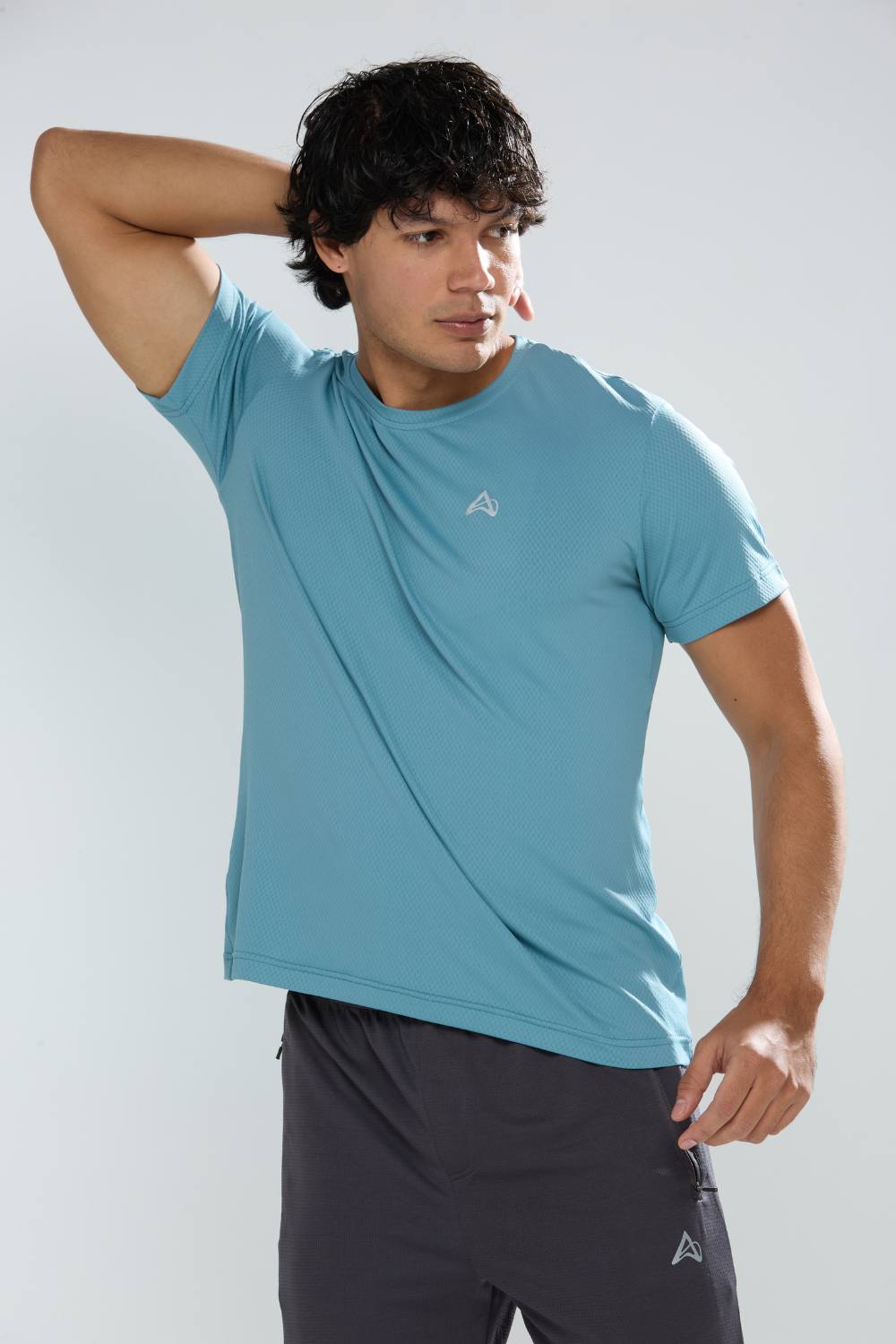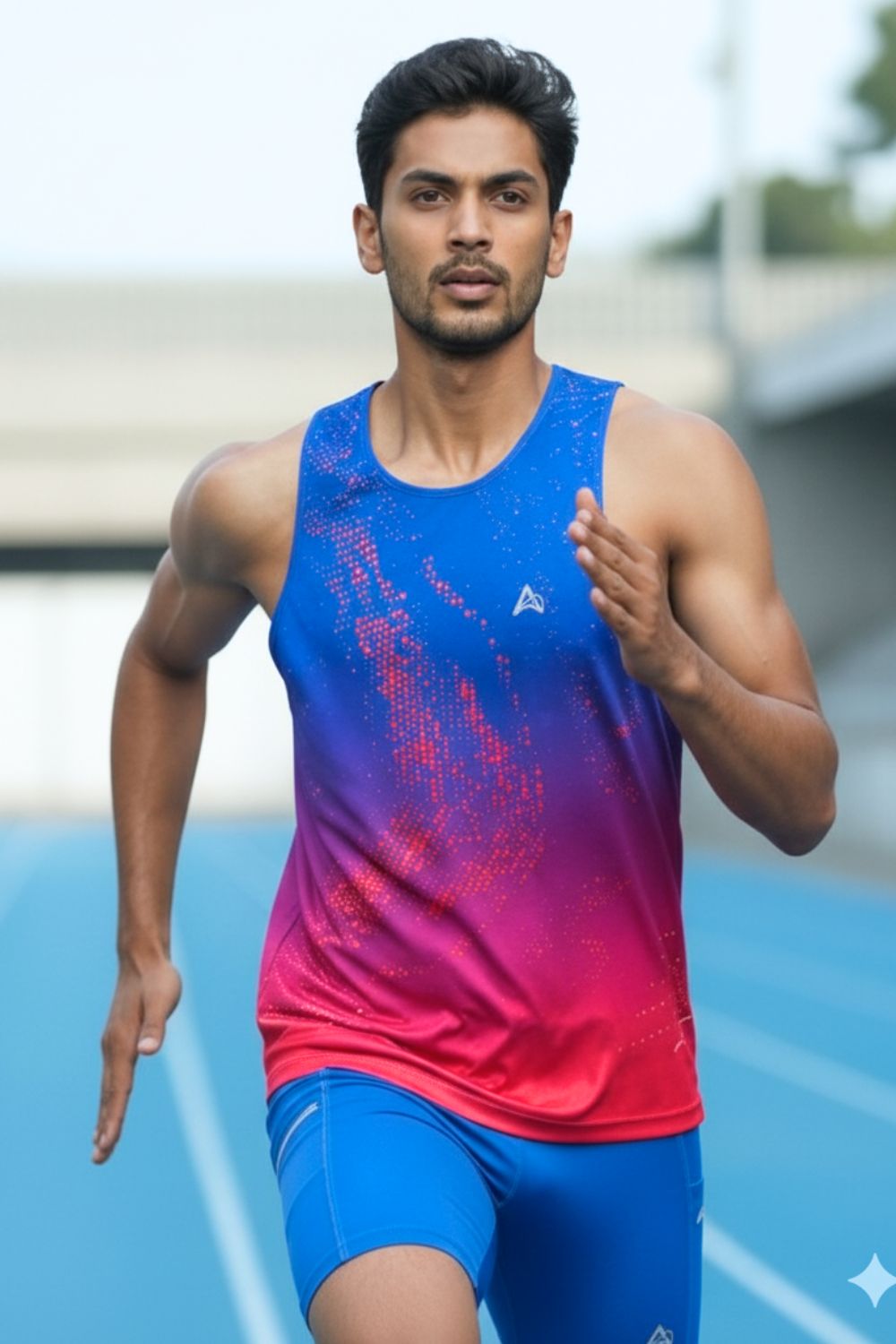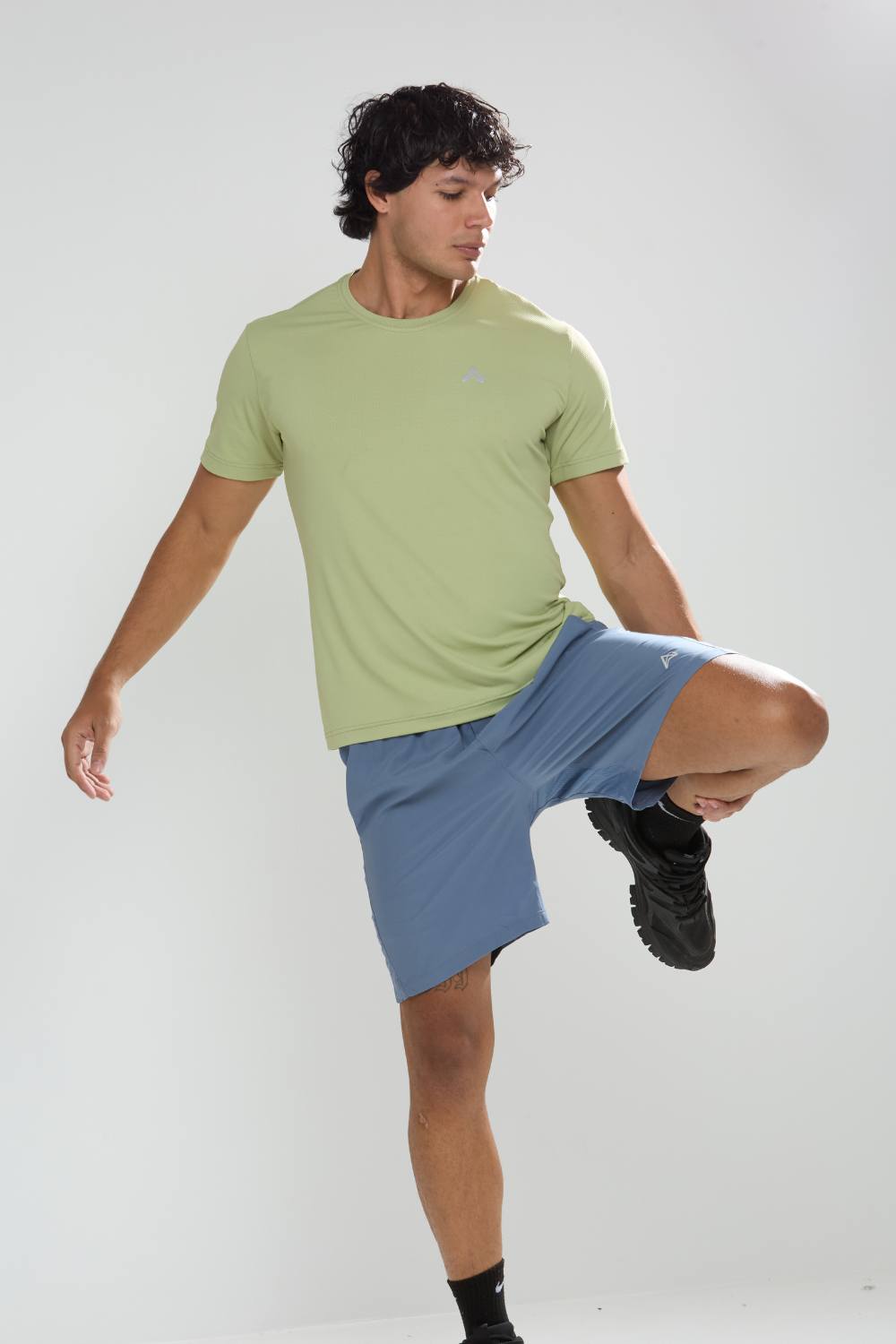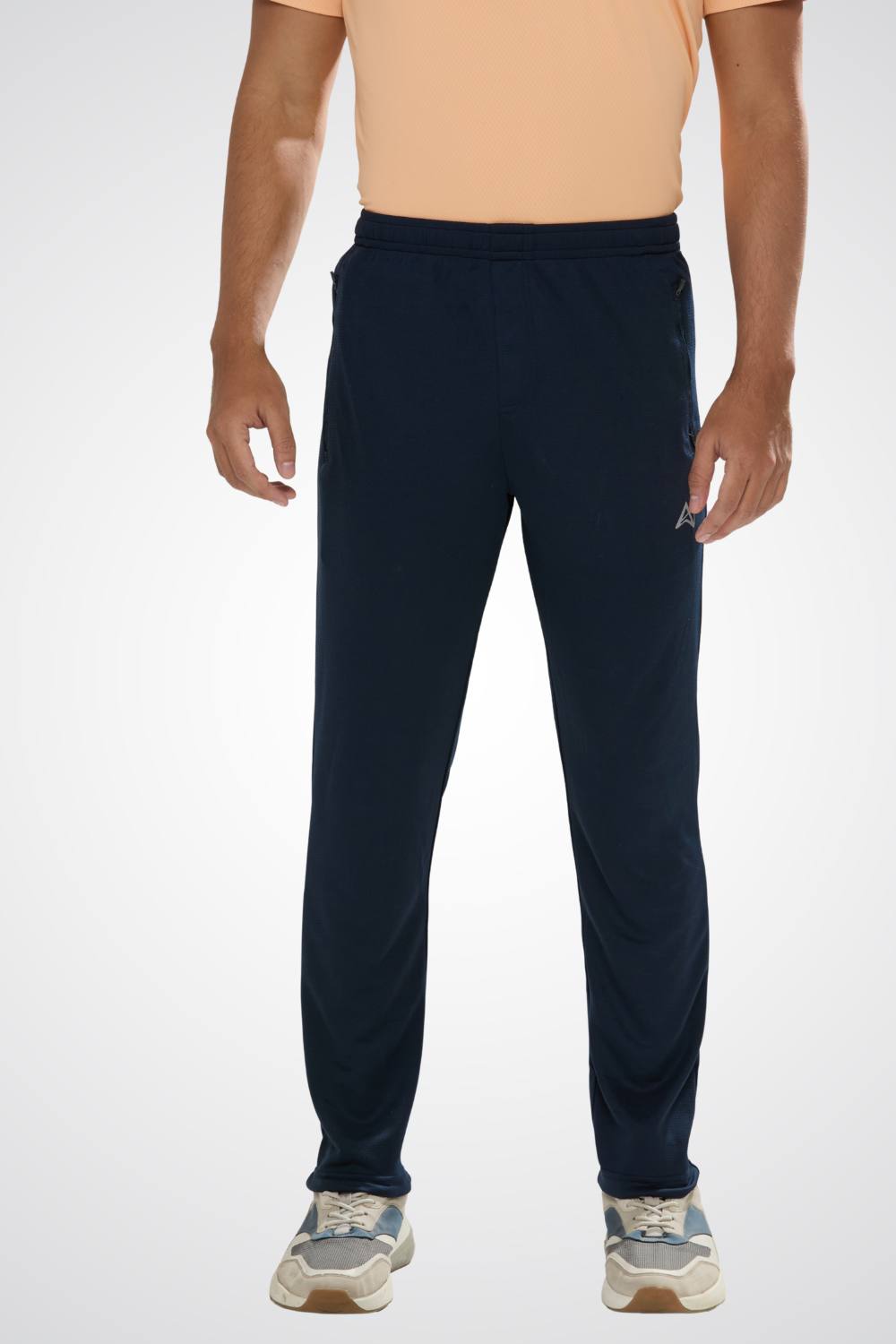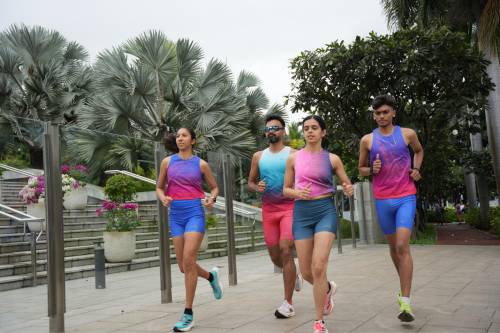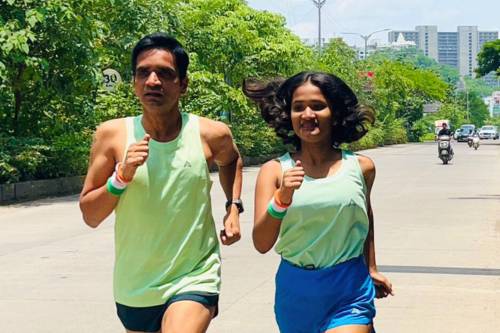Quick Listen:
Imagine hitting mile 20 in a marathon, your muscles aching, breath ragged, as relentless humidity in Mumbai engulfs you like a steam bath, or a sharp Boston chill pierces through every layer. It's not merely the grueling distance testing your limits it's the environment itself, turning the race into a battle against the elements. Marathon runners know this all too well: weather can elevate a triumph or trigger a collapse. That's why they're increasingly insistent on apparel crafted with fabrics engineered for precise climatic conditions, from sweltering tropics to freezing winds. In the high-performance sports clothing industry, this demand is sparking a revolution, pushing brands to innovate like never before.
Tired of gear that slows you down? Chafing, soggy fabrics, and missing pockets kill your run's momentum. At Aguante, we're runners who get it. Our high-performance activewear features moisture-wicking fabrics, ergonomic designs, and smart storage to keep you focused. Shop Now!
Climate-Specific Fabrics: The New Standard in Marathon Apparel Design
Marathons span the globe, drawing athletes to diverse terrains and weather patterns. From Singapore's oppressive stickiness to Dubai's blistering aridity or Reykjavik's icy grip, each venue imposes distinct demands on what runners wear. The solution lies in climate-specific fabrics, which represent the forefront of athletic wear advancements. Far removed from basic cotton, these materials are specialized textiles meant for athletic endeavors, whether sprinting through a race or flowing through yoga poses.
At their core, these fabrics boast an array of essential attributes that boost an athlete's capabilities. They resist bacteria to curb odors, endure rigorous use without losing form, remain feather-light for unrestricted motion, draw moisture away to keep skin dry, fend off mold for longevity, repel stains from sweat or spills, regulate temperature by managing body heat, allow air flow for comfort, stretch seamlessly for flexibility, and even shrug off water to maintain dryness. Such properties ensure runners stay focused, not distracted by discomfort. Dominant materials include polyester for its resilience and breathability, merino wool for natural odor control and warmth adjustment, and nylon for superior elasticity and water resistance. Yet the landscape is broadening, incorporating options like acrylic for softness and UV protection, olefin for quick drying in swim-like scenarios, elastane for unmatched stretch, and eco-conscious choices such as SeaCell from seaweed, NuYarn for enhanced wool performance, bamboo charcoal for deodorizing, Seawool from recycled shells, and Repreve from plastic bottles.
The significance is profound. Over 26 miles, ill-suited clothing can undermine even the fittest competitor a sweat-soaked garment in humidity weighs you down like an anchor, while non-breathable layers in cold create a stifling trap. Runners are responding by embracing these tailored solutions, mirroring broader market shifts. In urban areas, over 65 percent of adults possess at least one piece of practical activewear , driven by heightened health focus and the fusion of sportswear into daily life. This surge aligns with athleisure's popularity, where gym gear doubles as casual attire, propelling consumer behavior and market expansion.
The Science of Staying Cool, Warm, or Dry
Innovation in these fabrics is nothing short of remarkable, addressing every climatic nuance with precision. For steamy, sweat-inducing events, advanced blends like enhanced polyester excel at pulling perspiration from the body, evaporating it swiftly to maintain coolness and reduce weight. In chillier settings, materials such as merino wool or heat-retaining synthetics stabilize core temperature without excess volume, preventing energy loss to shivers. Sustainability enters the equation too, with bio-derived fibers offering environmental benefits alongside top-tier functionality think fabrics that nurture skin while minimizing ecological impact.
Smart technologies amplify this further: UV-blocking layers shield against sun exposure on bright routes, while adaptive textiles shift properties with temperature fluctuations. These aren't theoretical concepts; they're deployed in real competitions. Consider Tokyo's marathon, where humidity often soars to 80 percent major labels like Asics and Nike introduce lines with super-ventilated, sweat-evaporating fabrics that prevent saturation. Boston's unpredictable April gusts prompt the use of slim insulating barriers that hold warmth efficiently. In rapidly expanding regions like the Middle East and Africa, where the sports apparel market grows quickest, designs emphasize sun-deflecting, airy materials resilient to harsh desert rays.
Delving deeper, antimicrobial treatments use finishes to halt bacterial proliferation, enabling extended training without foul smells. Durability ensures fabrics withstand seam strains and repeated laundering, preserving integrity. Lightweight construction avoids bulk, yet provides robustness ideal for layered outfits. Moisture management relies on capillary forces to transport sweat outward, averting chafing. Mold resistance extends garment life, stain repellency handles everyday messes, thermoregulation adapts to seasonal shifts, breathability circulates air during exertion, stretch accommodates dynamic poses, and water resistance lets droplets bead off, keeping focus sharp.
Real Runners, Real Impact
Speak to seasoned marathoners, and the consensus is clear: optimal attire can transform a punishing ordeal into a peak achievement. Recent data from London's 2024 marathon reveals that 78 percent of participants valued climate-tailored clothing for its role in enhancing ease and minimizing irritation. A competitor navigating Mumbai's rainy season event called their sweat-pulling ensemble a "game-changer," maintaining dryness amid oppressive moisture. Another facing Boston's fierce breezes lauded a heat-managing outer layer as "seamless protection, not cumbersome armor." These stories underscore a pivotal evolution: apparel is now an investment in excellence, not mere covering.
Industry leaders are capitalizing on this momentum. Alliances between fabric pioneers and powerhouse brands yield breakthroughs, such as Patagonia's Gore-Tex integrations for featherweight, adaptable shells suited to variable weather. Niche players thrive by prioritizing green alternatives, like fibers from plants that match synthetic toughness while appealing to eco-aware consumers. The sector's transformation is evident in projections: valued at 266.74 billion USD in 2025, the market is set to climb to 375.77 billion USD by 2030, with a 7.09 percent compound annual growth rate. This expansion stems from escalating interest in high-function textiles, athleisure's casual dominance, and digital consumer interactions. Up-and-coming labels seize opportunities in specialized areas with sustainable offerings, urging veterans to ramp up eco-innovations in materials and aesthetics.
Market dynamics highlight the prominence of tops as a leading category, while outerwear is gaining momentum with accelerated demand. Running gear stands out among sports apparel segments, reflecting growing consumer focus on performance and endurance activities. Although men's apparel continues to dominate overall sales, children's activewear is emerging as a fast-growing niche. Traditional offline retail channels remain strong, but digital platforms are expanding quickly, reshaping consumer access. Regionally, North America holds a strong position, while markets in the Middle East and Africa are advancing at a faster pace, supported by rising sports participation and favorable government initiatives.
The Challenges of Innovation
Yet progress comes with hurdles. Crafting these advanced materials demands substantial investment in research and production, balancing traits like lightness with strength proves intricate. Supply chains for exotic textiles span continents, vulnerable to disruptions that hinder availability. Overpromising on capabilities risks disillusionment if a touted fabric falters under real stress, trust erodes, compelling brands to verify claims rigorously.
Despite these obstacles, the advantages are compelling. Specialized apparel grants a distinct advantage in saturation, enabling brands to differentiate through region-specific ingenuity for humid jungles or frosty cities. The burgeoning marathon travel scene, with athletes crossing borders for varied challenges, heightens this need. Higher price points justify premium features, as dedicated runners invest willingly. Direct sales strategies flourish, leveraging online platforms and endorsements to connect with targeted running groups.
A Future Tailored to the Elements
Looking ahead, marathon clothing's trajectory mirrors the sport's vitality. Analysts foresee AI revolutionizing fabric creation, enabling bespoke designs for personal physiologies or event forecasts. Climate shifts exacerbate urgency intensifying heatwaves and erratic storms necessitate even more responsive gear. Successful brands will prioritize development funding, collaborate with elite athletes, and inform buyers on technological edges.
Ultimately, these targeted fabrics transcend fad status; they're integral to elite athletic wear. As endurance seekers test boundaries worldwide, their equipment must synchronize evaporating perspiration in equatorial zones or conserving heat in polar climes. The marathon embodies resilience, serving as an arena for ingenuity. Here, superior material could tip the scales from solid effort to record-shattering victory.
Frequently Asked Questions
What are climate-specific fabrics and why do marathon runners need them?
Climate-specific fabrics are specialized textiles engineered for precise weather conditions, featuring properties like moisture-wicking, temperature regulation, and breathability. Marathon runners need these fabrics because running 26.2 miles in challenging environments from Mumbai's humidity to Boston's cold winds requires apparel that adapts to specific climatic demands. Standard cotton or basic materials can undermine performance by becoming waterlogged in humidity or creating stifling conditions in cold weather.
How do advanced running fabrics help performance in different weather conditions?
Advanced running fabrics enhance performance through targeted features for each climate: in hot, humid conditions, enhanced polyester blends pull perspiration away and evaporate it quickly to maintain coolness, while in colder environments, materials like merino wool stabilize core temperature without bulk. These fabrics also include antimicrobial treatments to prevent odors, UV-blocking layers for sun protection, and adaptive textiles that shift properties with temperature changes, allowing runners to maintain focus on performance rather than discomfort.
Are climate-specific running fabrics worth the higher cost for amateur marathoners?
Yes, climate-specific running fabrics are increasingly worth the investment even for amateur runners, as recent data from London's 2024 marathon shows 78% of participants valued climate-tailored clothing for enhancing comfort and minimizing irritation. These specialized fabrics can transform a punishing race experience into a more manageable achievement by preventing common issues like chafing, overheating, or excessive weight from sweat-soaked clothing. With the sports apparel market expanding rapidly and more options becoming available, runners at all levels can find performance benefits that justify the premium pricing.
Disclaimer: The above helpful resources content contains personal opinions and experiences. The information provided is for general knowledge and does not constitute professional advice.
You may also be interested in: How Indian Runners Build Endurance With Proper Gear
Tired of gear that slows you down? Chafing, soggy fabrics, and missing pockets kill your run's momentum. At Aguante, we're runners who get it. Our high-performance activewear features moisture-wicking fabrics, ergonomic designs, and smart storage to keep you focused. Shop Now!
Powered by flareAI.co





